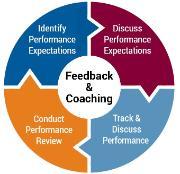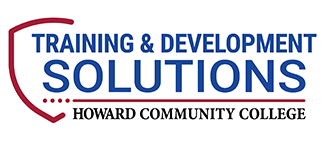
Training Trends
News Headlines
- Plan for and schedule the conversation. Coaching and feedback should be strategic and intentional rather than reactive and on-the-fly. Schedule meetings with your team members, specifically to provide coaching and feedback.
- Establish a goal for the meetings. Proactively consider what you want to accomplish by providing coaching and feedback to your team members. Think about the ideal outcome, and how you can structure the conversation to achieve that outcome.
- Make it ongoing. Coaching and feedback is rarely effective or impactful when facilitated as a one-time discussion. Consider how much you could accomplish, or move the needle forward, if you carved out time for ongoing touch points and conversations, centered around helping your team improve and grow.
- Overcommunicate. Say it. Say it again. Confirm they understand by having them repeat it back to you. Open the door for questions. The more you communicate, the more likely it is that your team will fully understand your position and direction.
- Be transparent. Share what you know. Provide answers where you can. If you do not know, say so. Encourage an environment of open and honest conversation.
- Restructure your onboarding procedures. Before, you could assume a new hire would authentically learn new processes, who is who, where supplies are located, and other day-to-day norms, simply by living in the work environment. Now that work environment is different. Make sure you consider this, and the scope of information, resources, and tools your new people now need to do their jobs and be successful.
- Appreciate your tenured team members. Who are your shining stars who have embraced countless changes and challenges, yet have remained standing there beside you, for the long haul? Look for new ways to let them know you appreciate their commitment. It matters.
- Turn up the empathy. Remember that most people have a lot going on in their lives, work aside. Being understanding, caring, and flexible goes a long way – especially now.
- Don’t assume everyone is okay. Take the time to ask your people how they are feeling about their jobs, including what is going well and where they need some help from you or others on the team. Maybe they are feeling good; maybe they are not. You will not know unless you ask.
- Look forward. While a lot of change is still taking place in many work environments, we must start thinking beyond today. Engage your people in conversations about what lies ahead and the role they play in helping the team or company get there.
 By: Regina Rabenhorst, Training & Development Solutions Instructor
By: Regina Rabenhorst, Training & Development Solutions Instructor
Good managers know that coaching and feedback are essential. They help teams get on track, stay focused, understand what is going well, identify opportunities for improvement, and consider how their role is contributing to the “big picture.” Heading into the new year, it is important to remember that many organizations, teams, and individuals are continuing to experience a significant amount of change and transition, which managers must account for when they are communicating.
Here is a hypothetical example that illustrates why.
Bob Jones manages a team of 10 employees. Prior to the start of the COVID pandemic, all 10 worked Monday through Friday from 8:30 a.m. to 5:00 p.m., in side-by-side cubicles. Pulling the group together for planned and impromptu meetings was easy. The team of 10 was also well connected on a personal level. Everyone knew that Jane’s daughter won her tennis match, that Josh’s wife got a promotion, and that Omar’s dad’s surgery went well. The pandemic changed those dynamics. With everyone working virtually, team meetings had to be scheduled well in advance, and the Zoom call often came to a close before anyone had the chance to ask about one another or their families. Bob’s team continued to work hard, but the dynamics of how that team collaborated changed – greatly and rapidly.
Fast forward to today. Bob is sensitive to each team member’s personal situation and needs, and he wants to be flexible. Three of the 10 members of the team are coming into the office all five days of the week. Two people are continuing to work full time remotely. Five have adopted a hybrid schedule, one of which is a new hire, who has not yet met everyone on the team in-person. For Bob, figuring out how to connect and communicate with his team, so that he can build and grow relationships, and provide solid and meaningful coaching and feedback has clearly taken on a new level of complexity.
Can you relate?
These are the workforce dynamics making it necessary for coaching and feedback conversations to change 2022. I can offer 10 tidbits of guidance to help managers along the way:
Every client I work with has unique circumstances and needs. However, the strategies outlined above are universal, and can benefit any leader or manager who is determined to provide more meaningful coaching and feedback, and therefore a system of support and connectivity within their team.
